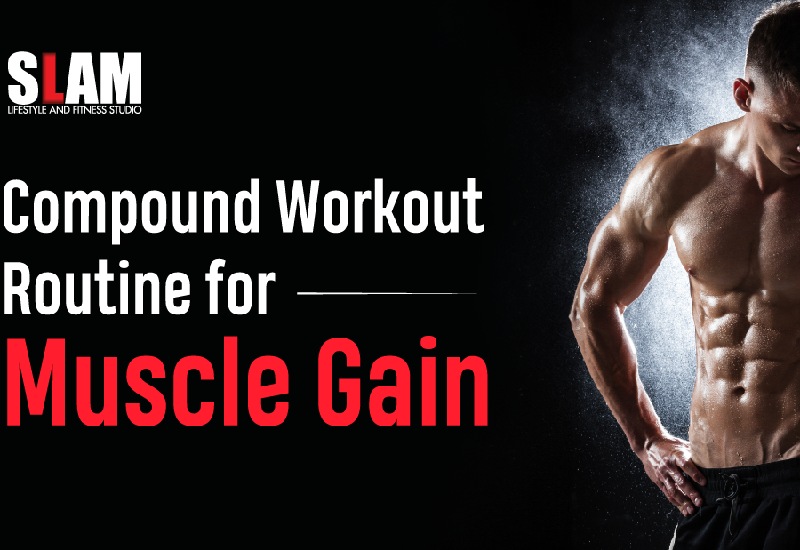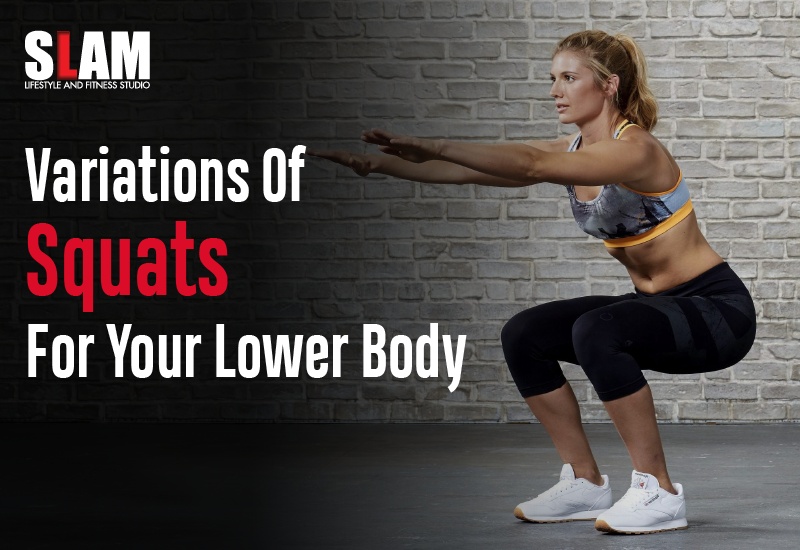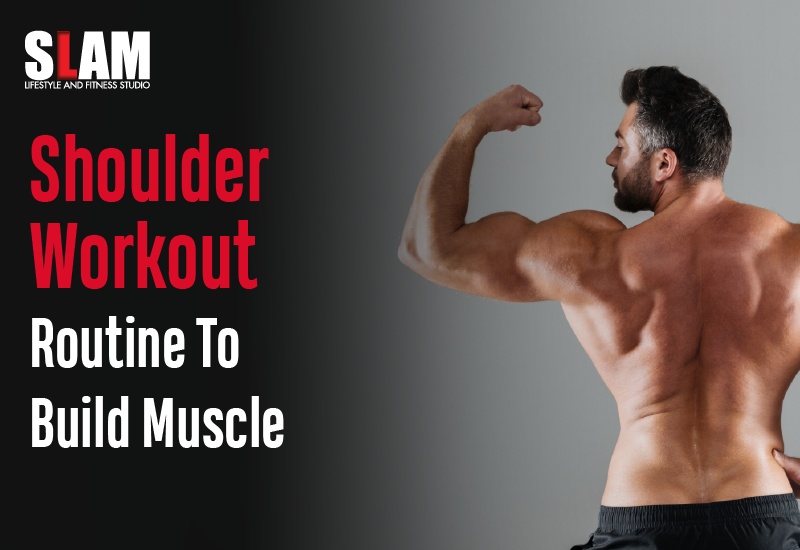Introduction
Are you looking to pack solemn muscle mass and transform your physique? To do that, you need a workout routine that optimises muscle growth and strength gains. While isolation exercises can have their place, compound exercises should be the cornerstone of any muscle-building program.
Compound exercises involve multiple joints and muscle groups, making them incredibly effective for building muscle and increasing overall strength. They stimulate more muscle fibers and provide functional benefits that can carry over into daily life.
The 9 Compound Workout Routine for Muscle Gain

1. Squats
Muscles Worked: Quadriceps, hamstrings, glutes, lower back, and core.
How to Do It: Place a barbell on your upper back, with your feet shoulder-width apart. Bend your knees and hips to lower your body until your thighs are parallel to the ground. Push through your heels to return to the starting position.
2. Deadlifts
Muscles Worked: Entire posterior chain, including the lower back, hamstrings, glutes, traps, and forearms.
How to Do It: Stand with your feet hip-width apart, bend at the hips and knees to grasp the barbell, and lift it by straightening your hips and knees while keeping your back straight.
3. Bench Press
Muscles Worked: Chest, shoulders, triceps, and upper back.
How to Do It: Lie on a bench, grip the barbell slightly wider than shoulder-width, lower it to your chest, and push it back to the starting position.
4. Pull-Ups
Muscles Worked: Latissimus dorsi, biceps, upper back, and core.
How to Do It: Hang from a pull-up bar with your palms facing away from you, then pull your body up until your chin is above the bar, and lower yourself back down.
5. Overhead Press (Military Press)
Muscles Worked: Shoulders, triceps, and upper chest.
How to Do It: Stand with your feet shoulder-width apart, hold the barbell at shoulder height, and press it overhead until your arms are fully extended.
6. Bent-Over Rows
Muscles Worked: Upper back, lats, rear deltoids, biceps, and lower back.
How to Do It: Bend at the hips with a slight knee bend, grasp the barbell with an overhand grip, and pull it towards your lower ribcage.
7. Lunges
Muscles Worked: Quadriceps, hamstrings, glutes, and calves.
How to Do It: Step forward with one leg, lower your body until both knees are bent at a 90-degree angle, then push back to the starting position.
8. Dips
Muscles Worked: Chest, triceps, shoulders, and lower chest.
How to Do It: Use parallel bars, lower your body until your elbows are bent at a 90-degree angle, then push yourself back up.
9. Romanian Deadlifts
Muscles Worked: Hamstrings, glutes, lower back, and traps.
How to Do It: Stand with your feet hip-width apart, hold a barbell with an overhand grip in front of your thighs, and lower it along your legs until you feel a stretch in your hamstrings, then return to the starting position by extending your hips.
Tips for a Successful Compound Workout Routine
Warm up adequately before starting your workout to prevent injuries.
Use proper form and technique for each exercise to maximise effectiveness and minimise the risk of injury.
Incorporate progressive overload by gradually increasing the weight or resistance.
Include compound exercises in your routine at least twice a week.
Allow adequate rest and recovery between workouts to promote muscle growth.
Here are some valuable facts on Compound Workout Routine for Muscle Gain

1. Compound Exercises Burn More Calories
Compound exercises, due to their involvement in multiple muscle groups, burn more calories than isolation exercises. This makes them beneficial for muscle gain, weight management, and fat loss.
2. Hormonal Benefits of Compound Exercises
Compound exercises like squats and deadlifts trigger the release of hormones like testosterone and growth hormone, which are essential for muscle growth and overall body composition improvement.
3. Variations of Compound Exercises
There are various variations of compound exercises that can target specific muscle groups differently. For example, front squats emphasise the quadriceps more, while sumo deadlifts target the inner thighs and glutes.
4. Safety and Form
Emphasising the importance of proper form and technique in compound exercises is crucial to prevent injuries. Poor form can lead to back, knee, or shoulder issues, so always prioritise correct execution.
5. Muscle Imbalances
Neglecting certain muscle groups during compound workouts can lead to muscle imbalances. To avoid this, incorporate exercises that balance out muscle development, such as rows to complement bench presses.
Case Study
Case Study: John’s Transformation Through Compound Workouts
Background:
John, a 28-year-old office worker, struggled with gaining muscle despite regular gym attendance. Determined to achieve his muscle gain goals, he embraced a compound workout routine.
Initial Assessment:
John was a beginner to intermediate lifter at 155 pounds, 5’10” tall, and 18% body fat. His primary goals were to gain muscle and increase overall strength.
Compound Workout Routine:
John’s trainer devised a compound workout plan featuring nine essential exercises, including squats, deadlifts, bench presses, and pull-ups.
Training Plan:
Three weekly sessions (Monday, Wednesday, Friday).
Sessions lasted 60-75 minutes.
3-4 sets of 8-12 repetitions per exercise, progressively increasing weight.
Emphasis on proper warm-up and cooldown routines.
Progress and Results:
Month 1-2
John focused on mastering exercise form, experienced muscle soreness initially, and saw energy levels rise.
Month 3-4
Muscle definition became more pronounced, weight increased to 170 pounds, and body fat percentage decreased slightly.
Month 5-6
Impressive muscle gains were observed, especially in the chest, back, and arms. John’s confidence soared.
Month 7-8
Continued progression with compound exercises and experimentation with variations.
Final Assessment (Month 9-12)
Weight reached 180 pounds with minimal change in body fat percentage.
Substantial muscle growth throughout the body.
Achieved personal bests in key lifts: squat, deadlift, bench press, and pull-ups.
Developed a lean, muscular physique, earning compliments from peers.
Conclusion
John’s case study underscores the potency of a structured compound workout routine for muscle gain. Over 12 months, he transformed his physique and achieved impressive results. His journey highlights the significance of commitment, proper form, and gradual intensity increase when pursuing muscle gain objectives through compound exercises.
SLAM Fitness

SLAM Fitness Studio is proud to be the ultimate destination for those who are looking to achieve their fitness aspirations with a personal touch and first-class facilities. SLAM offers a variety of fitness classes that cater to everyone from beginners to athletes at the top of their game. Their certified trainers take the time to create personalized workout plans so that everyone can get proper attention and support towards reaching their goal.
Whether you’re looking to lose weight, build muscle, improve your cardiovascular health, or simply just maintain a healthy lifestyle, SLAM Fitness Studio has all to offer in the perfect environment with the right expertise.
Coupled with cutting-edge equipment combined with a motivational atmosphere that fuels your zeal to push your boundaries away limits, SLAM empowers its members in embracing a healthy active lifestyle.
Takeaway
A well-structured compound workout routine is essential for anyone aiming to gain muscle efficiently. Compound exercises recruit multiple muscle groups, leading to greater muscle stimulation and strength gains.
By incorporating the nine compound exercises mentioned in this blog and following the provided tips, you can build the muscle mass you desire while improving your overall functional strength.
FAQs
1. Can beginners incorporate compound exercises into their workout routine?
Yes, beginners can benefit from compound exercises, but it’s important to start with lighter weights and focus on proper form to prevent injuries. Consider working with a fitness professional to ensure you perform these exercises correctly.
2. How many sets and repetitions should I do for each compound exercise?
The number of sets and repetitions can vary based on your goals, but a common starting point is 3-4 sets of 8-12 repetitions per exercise. Adjust these numbers based on your specific goals, such as strength or hypertrophy.
3. Should I do compound exercises in every workout session?
It’s not necessary to do compound exercises in every workout, but they should be a regular part of your routine. You can rotate them with isolation exercises to target different muscle groups and prevent overuse injuries.
4. Can compound exercises help with fat loss in addition to muscle gain?
Yes, compound exercises can aid in fat loss by burning more calories and increasing your metabolism. Combining compound exercises with a balanced diet and cardio workouts can be effective for overall body composition improvement.
5. How important is rest and recovery in a compound workout routine?
Rest and recovery are crucial for muscle growth and injury prevention. Aim to have at least 48 hours of rest between intense compound workouts for the same muscle groups. Listen to your body; if you feel fatigued or sore, consider taking an extra day of rest.



